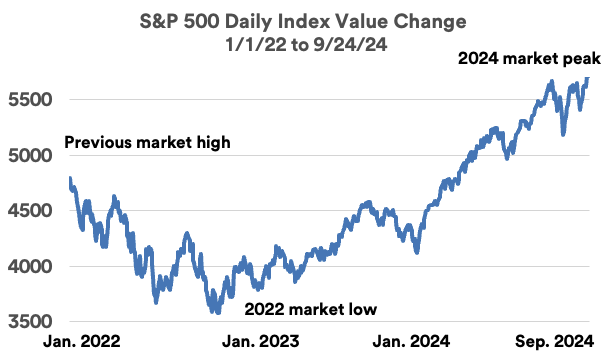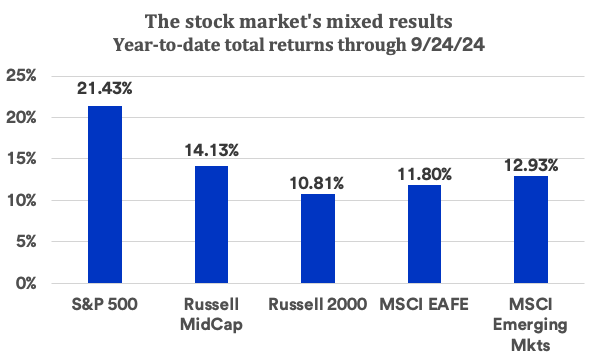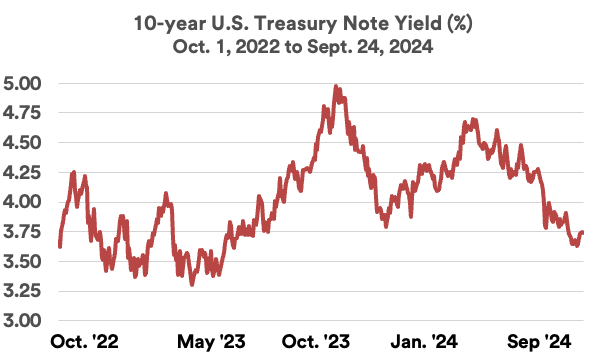What to invest in right now
Haworth says given the degree of volatility in the market, some may want to consider dollar-cost averaging as a way to effectively invest in equities. “By making regular investments over a period of time, you aren’t anchored to an investment at a single price; you stretch your investment out at different price points over time,” says Haworth. “It also gets you going on an investment plan so you can start growing your wealth now.”
Assets set aside to meet funding needs in the next 18 months should capitalize on today’s elevated interest rate environment by utilizing higher-yielding savings accounts, CDs and money market mutual funds. However, Haworth notes that short-term savings yields will decline as the Fed cuts interest rates.
“Be prepared to take what the capital markets offer given the current environment’s realities,” says Freedman. He advises that long-term investors should consider positioning their portfolios with a neutral mix of equities, fixed income and real assets. Freedman adds, “It’s critical to have a financial plan that’s tied to the specific goals you hope to achieve.” With a plan in place, you can more readily identify investment strategies that align with your goals.
Based on your goals, timeline and risk appetite, consider these additional portfolio strategies:
- For tax-aware investors, consider slightly longer-than-average durations in municipal bonds, including a modest allocation to high-yield municipal bonds.
- For non-taxable fixed income portfolio diversification, consider lower quality vehicles, such as non-government agency issued residential mortgage-backed securities. Portfolio duration can be managed using long-maturity U.S. Treasury securities.
- For trust portfolios, investors may consider reinsurance to capture differentiated cash flow with low correlation to other portfolio factors such as market or economic trends.
Discuss options with your wealth management professional and be sure to understand the risks associated with each of these investments. Determine whether any can help you more effectively diversify your portfolio.
Freedman adds it’s important to regularly review your plan with your wealth management professional. Determine whether there are opportunities to rebalance your portfolio in ways that more appropriately reflect your investment objectives, time horizon, risk appetite and the current market environment.
Have questions about the economy, markets or your finances? Your U.S. Bank Wealth Management team is here to help.





